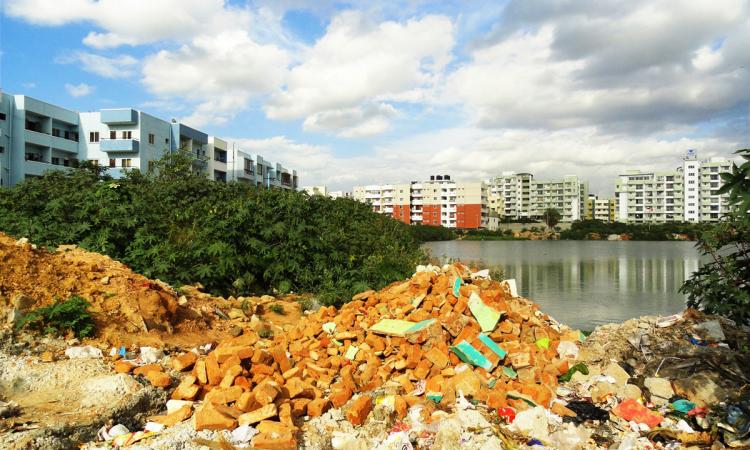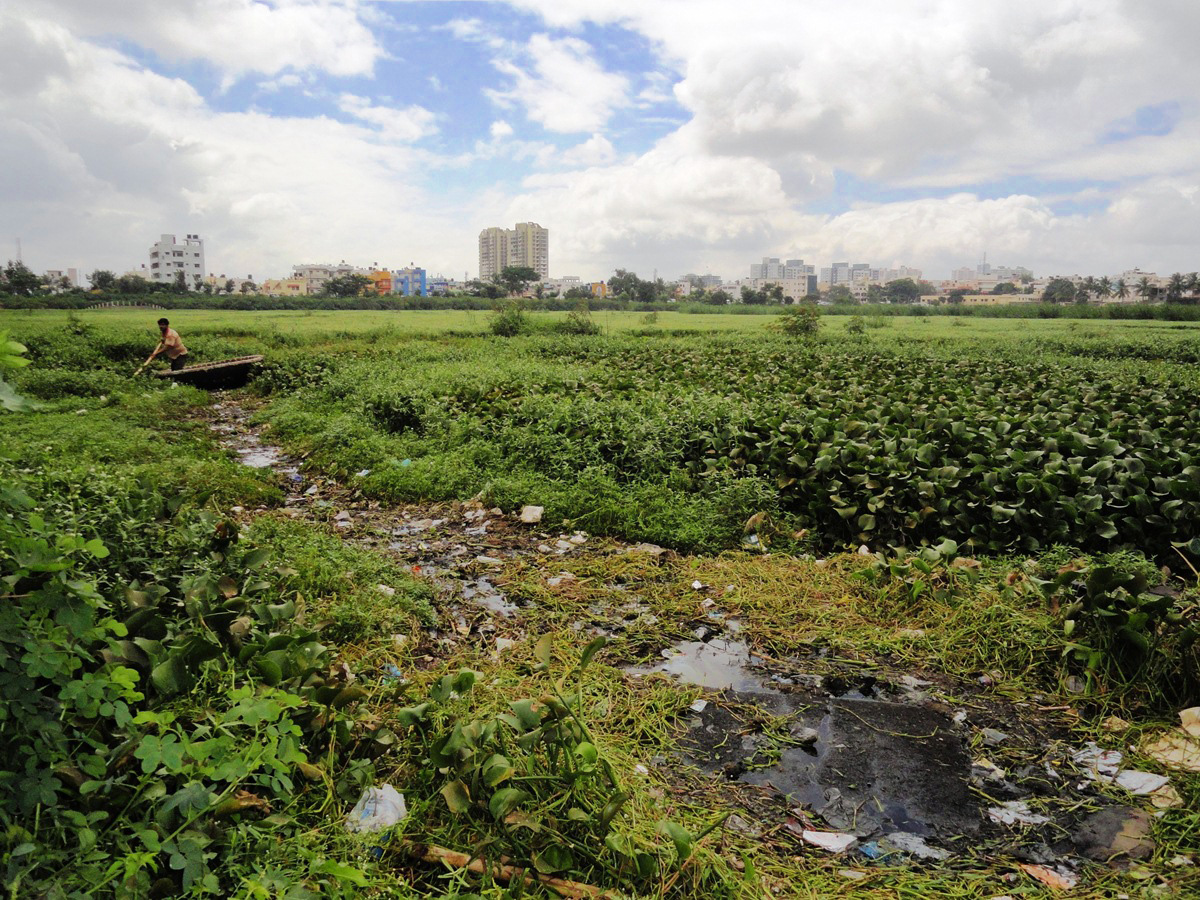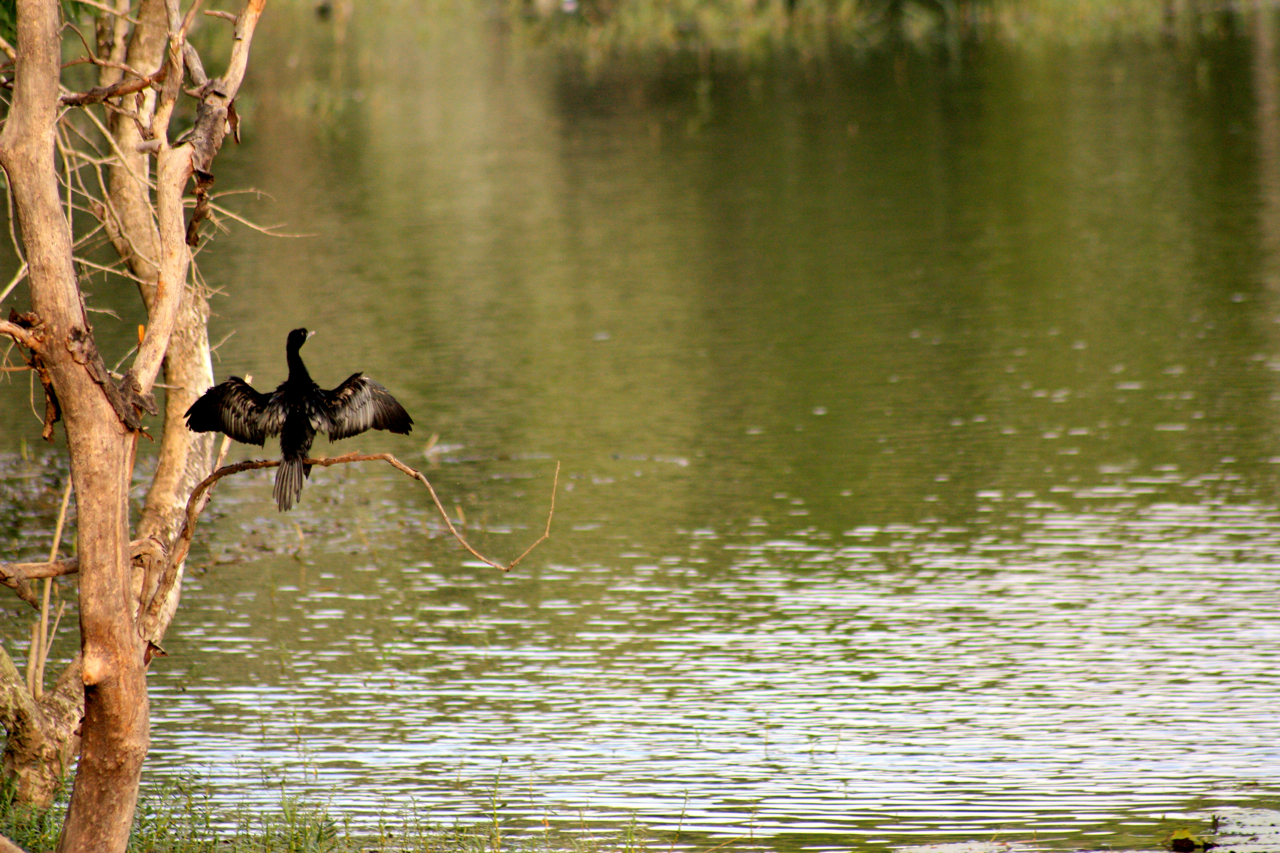
"Growing garbage menace ups nitrate content in lakes", said a recent headline in the Deccan Herald that highlighted a study conducted by the Indian Institute of Science (IISc) on illegal dumping sites situated near water bodies in Bangalore. The Energy and Wetland Research Group (EWRG) and Centre for Ecological Sciences (CES) of the IISc, have found that waste dumping has led to severe pollution of water bodies as well as groundwater which, if unchecked, might lead to serious health hazards.
Dr Ramachandra, who heads the study said, "Reasons could be related to continuously increasing direct inflow of sewage, waste water and leachate into water bodies. As there is no other possible reason for the increasing level of nitrate in groundwater, mismanagement of water has a significant impact on groundwater quality parameters. There is a need for immediate intervention for waste treatment to avoid further contamination of groundwater”.
City of Lakes no more!
Factoring in natural terrain, Bangalore's lakes were beautifully arranged in a series. These lakes had a cascading effect, which also acted as a flood control measure. A network of storm water drains fed these lakes storing all the rainwater and met the needs of Bangaloreans for drinking, washing and other necessities.
 Sadly, urbanisation has brought this natural cycle to a halt. Encroaching on the lake bed and obstructing the flow of storm water in to these lakes has resulted in blockages and stagnation. Even worse, is that the lack of adequate infrastructure in the city has resulted in raw sewage feeding these lakes today rather than rainwater! Today, inefficient solid waste management has made lake beds and rajakaluves dumping sites.
Sadly, urbanisation has brought this natural cycle to a halt. Encroaching on the lake bed and obstructing the flow of storm water in to these lakes has resulted in blockages and stagnation. Even worse, is that the lack of adequate infrastructure in the city has resulted in raw sewage feeding these lakes today rather than rainwater! Today, inefficient solid waste management has made lake beds and rajakaluves dumping sites.
Per the Karnataka State Pollution Control Board statistics, Bangalore had about 262 major water bodies in 1960, which have declined to 81 in 2008. Of these, only 34 are recognized as live lakes. Due to silt deposition in the lakes, the impounding capacity has reduced which is leading to higher evaporation losses due to the water being shallow.
With more and more silt, toxic substances, and garbage accumulation in lakes year after year, the permeability has reduced resulting in poor quality and reduced groundwater levels. Water, which was available at 80-100 feet below the ground, is now found at not less than 400 - 500 feet in many parts of the city.
Quality (or lack thereof) of groundwater in Karnataka
Karnataka's Mines and Geology Department published a report that detailed the water usage and quality of the state's water. The study found that 570 MLD (million liters a day) of Bangalore's water consumption comes from groundwater, in order to compensate the shortfall from supply through the Arkavathi and Cauvery rivers.
The study also analysed 2209 groundwater samples covering the entire city. Nitrate content was in excess of the permissible limit in 29% of the samples, iron in 10%, total hardness in 8.5% and fluoride in 0.6%. After accounting for samples in which more than one parameter was beyond permissible limits, 31% of the samples did not meet drinking water standards.
Many of Bangalore's lakes, whether filled with water or not, are filled with weeds. Called eutrophication, this happens when chemical nutrients rich in nitrogen and phosphorus are let into the lake causing severe water quality problems.
The silver lining: Citizen groups
Several vigilant citizens have come forward to form lake restoration groups under the banner Save Bangalore Lakes Trust (SBLT), which has done a commendable job in ensuring that further deterioration of water bodies are checked.
A city level forum called the Solid Waste Management Roundtable (SWMRT) Bangalore, which provides the latest know-how on the what, where and how citizens can do their bit in solid waste management, has been formed. One of the members of SWMRT and Coordinator in Environment Support Group, Bhargavi S. Rao, says, "The need of the hour is segregation of waste at source and composting locally either at the household/ street/ neighbourhood/ ward level to stop waste from reaching lakes, farms, grazing lands and forest areas".
Combined with waste segregation, greywater recycling has to be addressed at the household/ institution/ neighbourhood level as well. The safest way to handle greywater is to introduce it directly into the biologically active topsoil layer, where soil bacteria can quickly break it down, rendering the available nutrients to plants. This sort of biological water purification is much more effective than any engineered treatment as it protects the quality of groundwater and surface waters. Rao adds that ward committee rules have provisions for resolving issues at a local level but people need to make use of it in a way that applies to them.
Wake up local agencies!
Though these local initiatives are remarkable, N. S. Mukunda, President of the Citizens Action Forum, an NGO in Bangalore working on lakes and storm water drains and also a Trustee of the SBLT says that unless the administration looks at the issue at the city level, such local solutions will not be sustainable. He says that the failure of the fundamental duties of local governance agencies is the reason for this apathy and for the deteriorating ecosystem of the lakes.
"All lakes have to be declared as heritage sites, brought under a single authority and revived as a chain of lakes and not as individual entities. Storm water drains (SWD) have to be cleared and the existing principle of allowing sewage to flow in SWD and cleaning it at the lake bed by installing sewage treatment plants (STP) should be discouraged. SWDs are to be used to interlink the lakes and bring rainwater to the lakes", he says.

Systemic changes could help
Bangalore-based Sapna Swamy, an urban and environmental planning and management consultant and also Project Manager at eParivarthan, has worked on developing solid waste management (SWM) action plans for different cities and towns in Karnataka. She says, "SWM in Bangalore has failed due to lack of monitoring. Inspite of 80% of the waste collection being privatized, the system is inefficient only because there is no monitoring". According to her, the immediate requirements to ensure proper waste management are:
- Provide dedicated staff at Ward, sub-division and division levels for solid waste management.
- Empower the staff with powers to issue notices and levy penalty to defaulters.
- Create a separate head of accounts for SWM to understand the actual expenditures, as against the existing system where the expenses are booked under two heads: health and engineering.
- Ensure proper collection mechanism for segregated waste.
- Strengthen the grievance redresssal system by having people from within the system responsible for resolving issues rather than outsource it.
What is most important in bettering the current situation is that people should become aware of the many possibilities related to saving water, harvesting rain water, giving importance to the many water sources such as lakes, wells, streams and rivers and stopping using chemicals such as pesticides, detergents etc. They must also become familiar with alternate cleaning agents and be appraised of court orders that have been passed in the recent past with respect to the protection of lakes and rajakaluves.
Lead image source: Gopal Katwal Chhetri